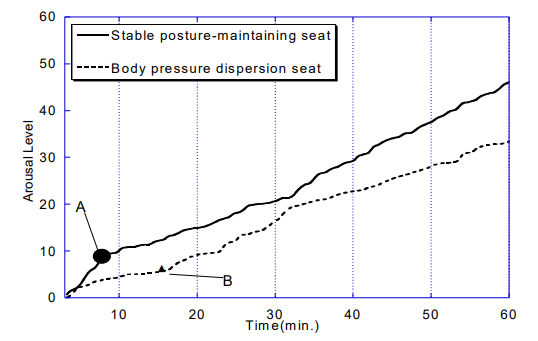研究者紹介
Researcher
工学研究科
システム工学専攻
FELIX CHAVEZ JOSE ANDRES

- 研究テーマResearch theme
- Driver's fatigue is a risk factor for accidents on the road. When a driver is experiencing fatigue, their attention can be affected, they can have slow reaction times and their decision making abilities might be decreased, which can increase the chances of an accident happening.
Many tests have been performed to estimate the fatigue of a person. Some of the tests use EEG (electroencephalogram) or EMG (electromyogram). However, this tests may not be suitable for long term analysis of a driver because the measurements can be compromised outside laboratory conditions.
EEG and EMG recordings are very susceptible to noise from the environment because they require very sensitive equipment. EMG requires the placement of electrodes on specific muscles, and EEG the placement of electrodes on the scalp, which can be done in controlled laboratory conditions, but it is an inconvenience when using them in natural conditions. Therefore, an alternative method for estimating fatigue real-time in real life conditions should be developed.
- 研究内容の概要Overview
- Previous research has been done using PPG (photoplethysmogram) to estimate fatigue during prolonged periods. In this research, it was found out that the curve of the PPG power values had the same tendency as the curve from the sensory fatigue evaluation using Borg's RPE scale, which measures fatigue. The values PPG power fluctuation curve increased as the time passed while the test subjects sat down for an hour. Similarly, the values of the Borg's RPE scale also increased with time. Therefore, it can be said that an increment of the power values of the PPG is related to an increment in the fatigue of the driver.

Figure 1. Fatigue level and PPG power curve during an hour of sitting.
Figure 1 shows the results of the research of E. Fujita et al. It can be seen a gradual increment in both curves. Each curve represent the values of the PPG power fluctuation when the driver is sitting on a stable posture maintaining seat and a body pressure distribution seat. The circle and the triangle represent the total sensory evaluation after an hour of sitting. The curves, after an hour, reach a very similar value marked by the triangle and the circle. This means there is a relationship between the PPG and Borg's RPE scale.

Figure 2. Arousal level and Pulse wave arousal curve.
According to E. Fujita et al, figure 2 shows the arousal levels based on the PPG. When the a stable posture maintaining seat was used, the arousal levels changed at 5 mintues. When a body pressure dissperion seat was used, the levels changed after 15 minutes.
However, it is still unknown why this relationship exists. To provide a more accurate fatigue estimation it is necessary to understand how the PPG is affected by fatigue. There are several mechanisms in the body that can affect the PPG signal. The PPG signal is produced by the effects of different systems. To measure this signal, light (typically infrared light) is radiated over a surface which has blood flowing underneath. This way, volumetric changes can be detected. However, there are several factors that can change the amount of volume of blood in an area, such as vascular functions, autonomic nervous system regulations and cardiovascular phenomena.
To understand the mechanisms through which fatigue changes the PPG amplitude, fatigue tests and measurements of different signals must be performed. In this research the patterns and trends between these signals, the PPG signal and the fatigue curve are explored.
- 研究成果をどのように社会に役立てるか
(還元の構想)Giving back to society - This research attempts to find the underlying causes of the effect fatigue has over the PPG signal on people sitting down. It can impact our understanding of driver's fatigue and can contribute to society in several ways.
One of the aspects society can benefit from this is the improvement of safety on the road. By learning more about this relationship, more reliable and precise methods for estimating fatigue can be developed, and this could help reduce the number of car accidents caused by fatigued drivers..
By exploring which physiological events happen at the time the PPG signal is changing due to the fatigue of the driver, we can come to understand the physiology of altered PPG during fatigue. Additionaly, by analyzing other signals while messuring fatigue and recording PPG, patterns and trends could be found. These findings can lead to the development of more reliable and precise methods for fatigue estimation. Systems integrated in vehicles and wearable devices could be developed.
As the research field on driver's fatigue develops and becomes more reliable, policies around safe driving could be made, such as when should rest periods be taken, or limits on the number of hours someone can drive safely. This can improve the well-being of the drivers, specially those working in the transportation sector.
The transportation industry could also benefit from this research, since the performance of drivers decreases with fatigue. Implementing strategies to reduce fatigue on drivers, could increase their performance and yield better results for the companies.